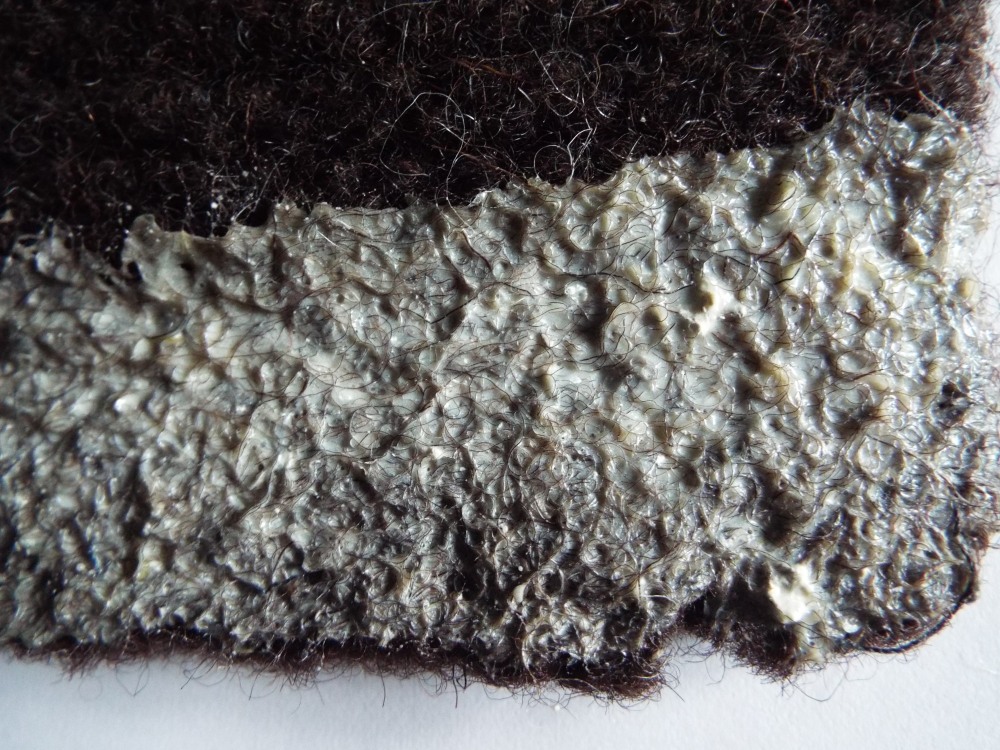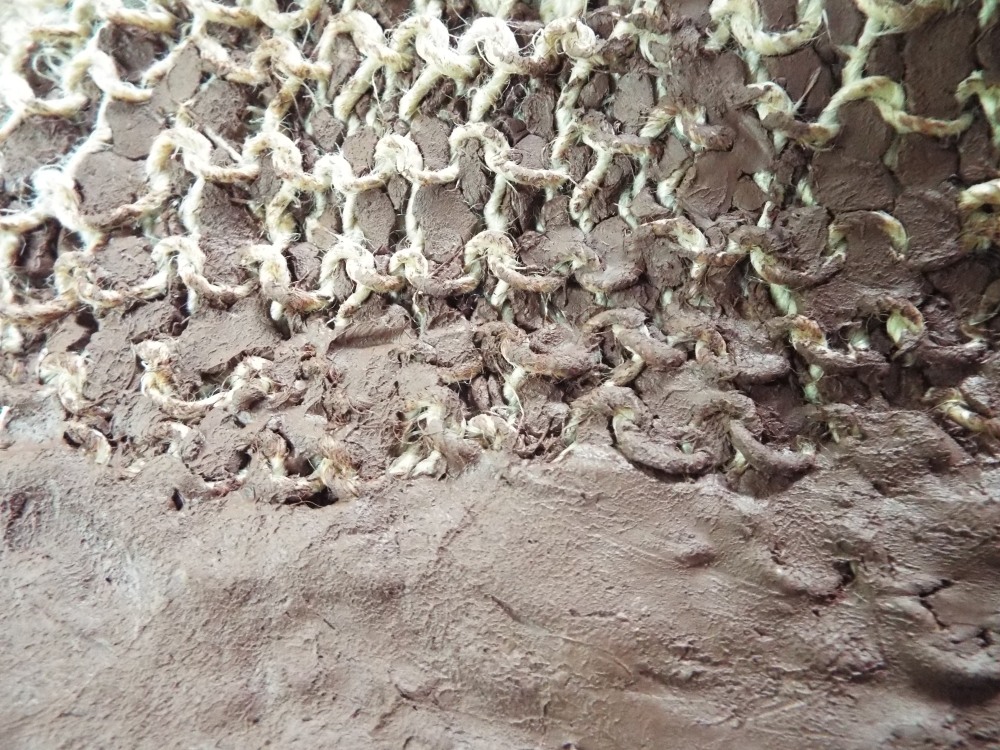I greatly enjoy combining unexpected materials with fabric, and challenging the nurturing associations of knitting. These material experiments combine knitting with a range of materials (latex, plaster and acrylic gels), where the material goes beyond just being a garment or domestic object, but is treated as a canvas or sculptural object.
Paint, yarns and fabrics can be coloured with fabric paints. However, if the piece is intended as art, any type of paint can be used, including acrylic (iridescent, neon, texture gels), household emulsion, gloss or varnishes. Here are a few of my knitting samples with various mediums and acrylic gels….
Latex, creates visceral effects and rubbery surfaces, although the final effect will depend upon the surface of the material. The latex can be coloured with specially designed pigments, or experiment by combining other materials (i.e. coffee granules, chopped up fibres, etc).

I have found latex to be an unpredictable material – with some artworks made from latex sheeting completely changing colour! It has a limited lifespan, and will rot and become brittle if exposed to sunlight. However (so far), I have found latex to be more stable when applied to a textile base.
Latex will adhere permanently to any fabric – so always wear old clothes. Apply with a brush or sponge, and rinse in water immediately after use– although these will eventually also become clogged with latex.
It is advisable to wear eye protection. Always work in a well ventilated area, as latex gives off ammonia fumes, and wear a suitable respirator, especially if using frequently.
Plaster, dip or spread over textiles, to create firm rigid sculptural pieces. There is also the option to colour plaster with specially designed pigments, acrylic paints or none toxic raw pigments.
The ratio is usually 2 parts plaster sprinkled into 1 part water, until the plaster forms an island in the water – mix well. Work quickly as the plaster sets within minutes. Wear gloves, and a dust mask when handling the dry powder, and never pour unused plaster down the sink!
Unfired clay, any clay can be spread over textiles, but reddish-brown terracotta works particularly well. Always clean-up with a damp cloth, as dry clay dust contains silica, which can be harmful if inhaled over a long period of time. This method works best for artworks likely to receive limited handling.

Health and Safety
Experimental textiles are great fun, but can also be hazardous. Take extra care, or avoid the process if you have any health conditions. ALWAYS follow safe working practices and read the H&S data relating to the materials, if in doubt seek professional advice.














One Comment Add yours